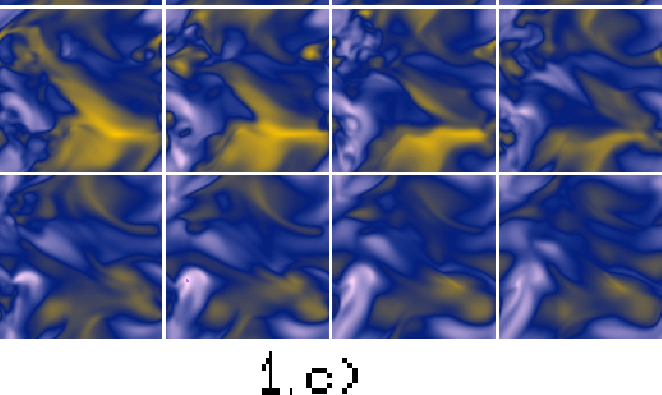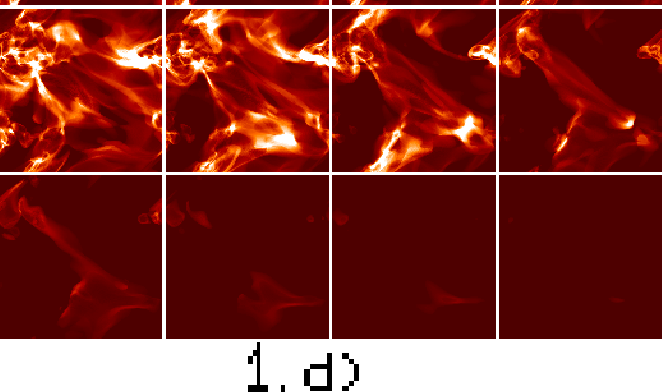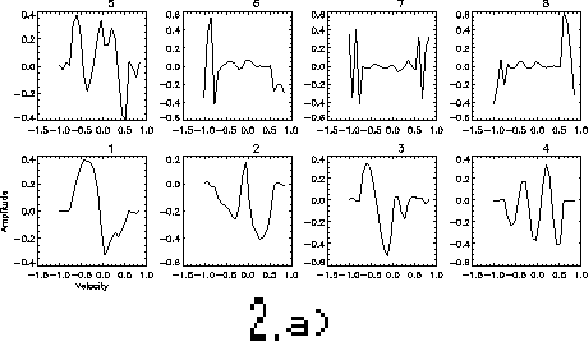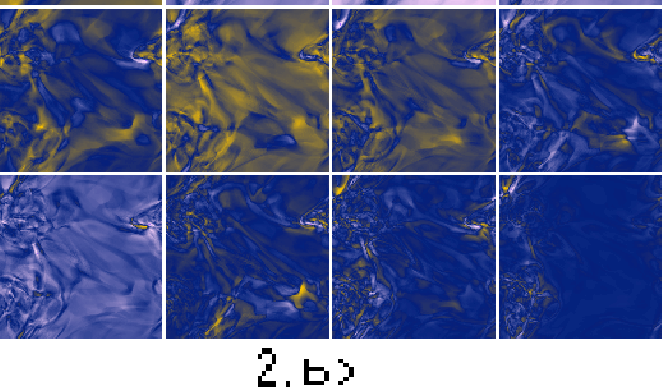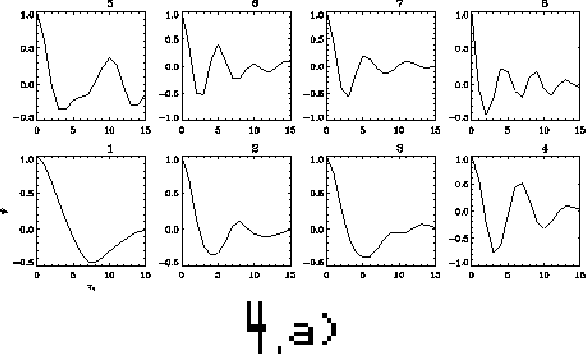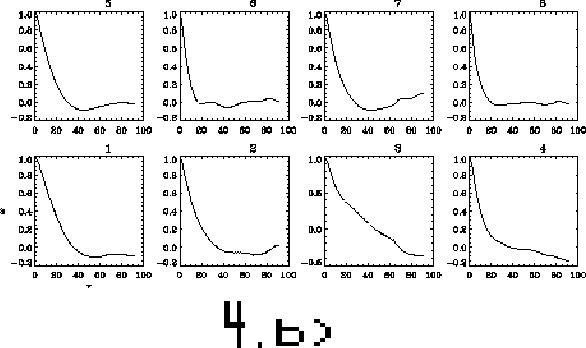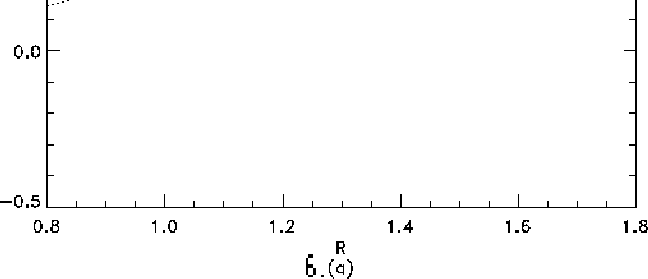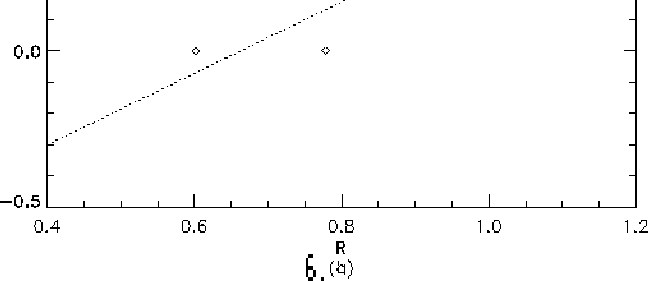Figure 4. Autocorrelation for the a) eigenvectors and b) eigenimages respectively. Where
Figure 1. Four views of the ISM simulation: a) Total projection of the density field along the z coordinate. b) Cuts of the 3-D density field perpendicular to the z direction, separated by a distance of 6 pixels. c) Same cuts as in (b) but for the z-component of the velocity field. d) The z-integrated density in each of the 16 velocity channels of the position-velocity (PV) cube.
Figure 2. Results from a Principal Component Analysis (PCA) of
the ISM simulation a) Eigenvectors. b) Eigenimages. Only the first six
eigenvectors and eigenimages are statistically significant. Note that
the characteristic size of the structures appearing in the eigenimages
decreases for increasing order. Units of velocity are in code units
(11.5 km/s).
Figure 3. a) Eigenvectors and b) eigenimages for the W3
molecular cloud (reproduced from Heyer & Brunt 1999).
Figure 4. Autocorrelation for the
a) eigenvectors and b) eigenimages respectively. Where ![]() and
and
![]() are the distances at wich the correlation is taken in pixels in
the first case and in velocity channels in the second.
are the distances at wich the correlation is taken in pixels in
the first case and in velocity channels in the second.
Figure 5. Velocity increment-size relationship for the
pseudo-simulation data of Heyer & Brunt (1999).
Figure 6. Velocity increment-size relationship for the simulation
data, obtained by plotting the values of ![]() and
and ![]() at which the
corresponding correlation curve has decayed to a)
at which the
corresponding correlation curve has decayed to a)
![]() and b)
and b)
![]() .
.
Figure 7. Energy spectrum for the ISM simulation (solid curve). The solid
straight line shows a slope of -3. However, the spectrum is not a
fully-developed power law, due to the low resolution. Thus, at small
wavenumbers (large scales) the slope is shallower (dotted line, with
slope -1.8).


